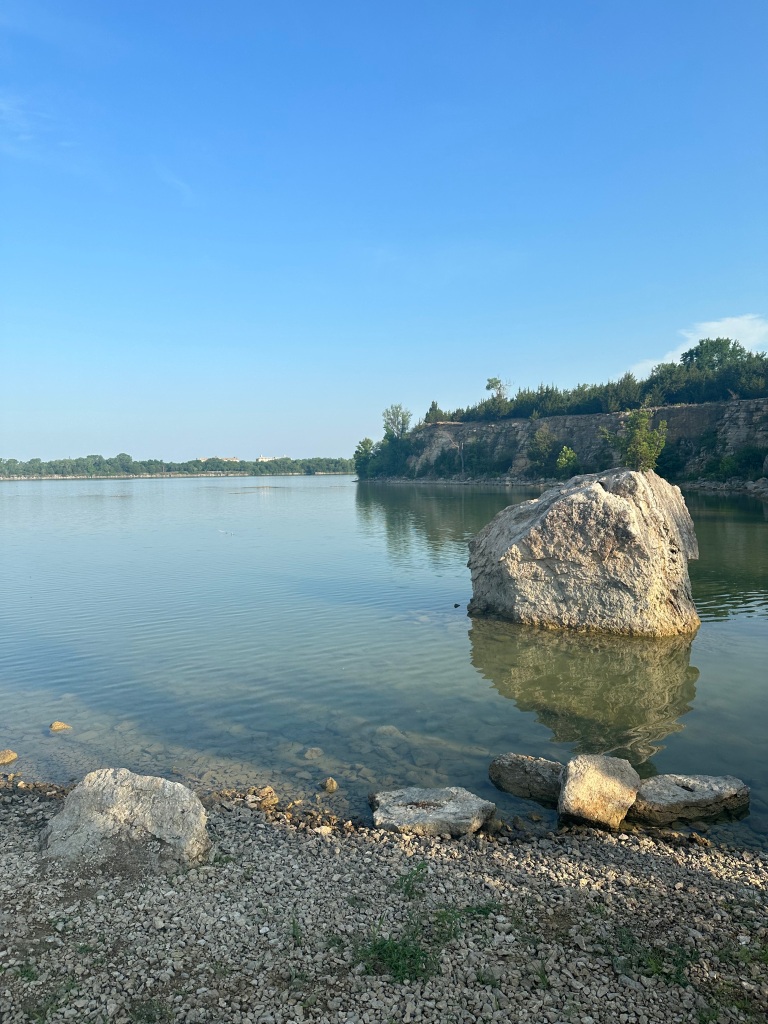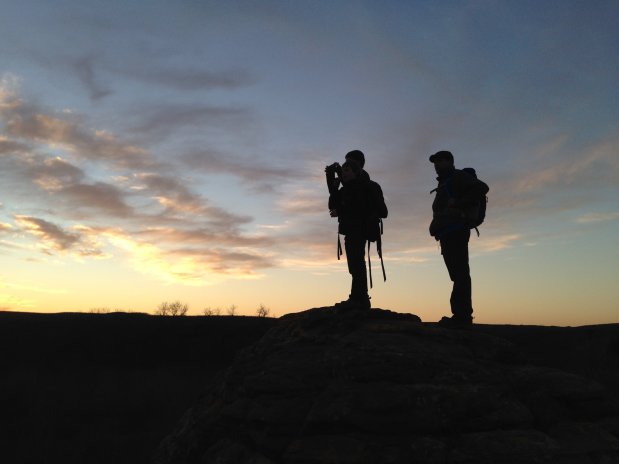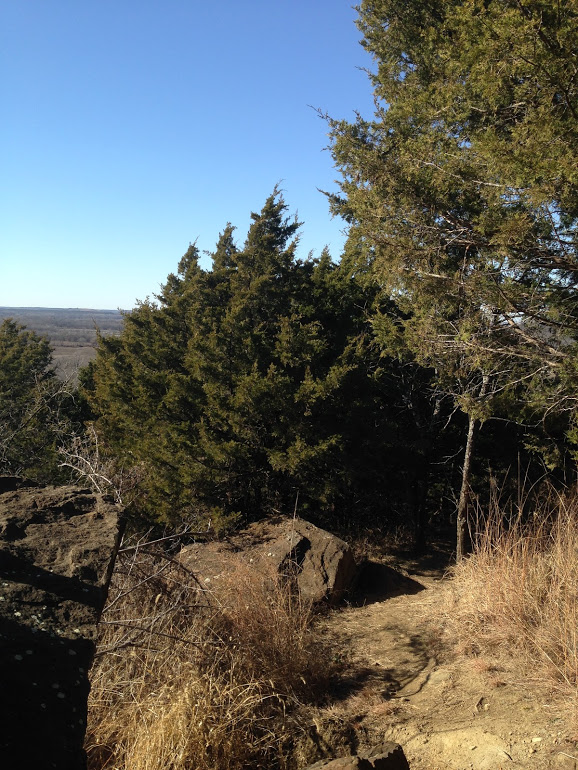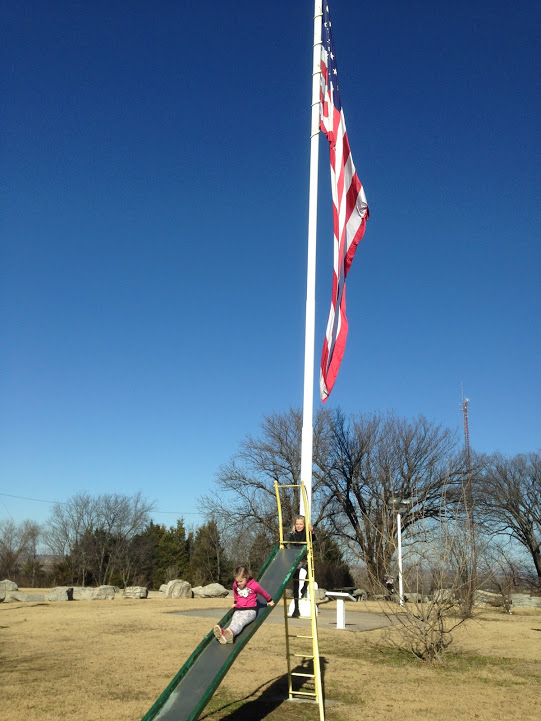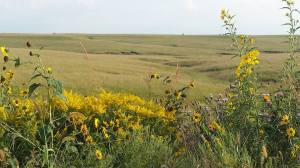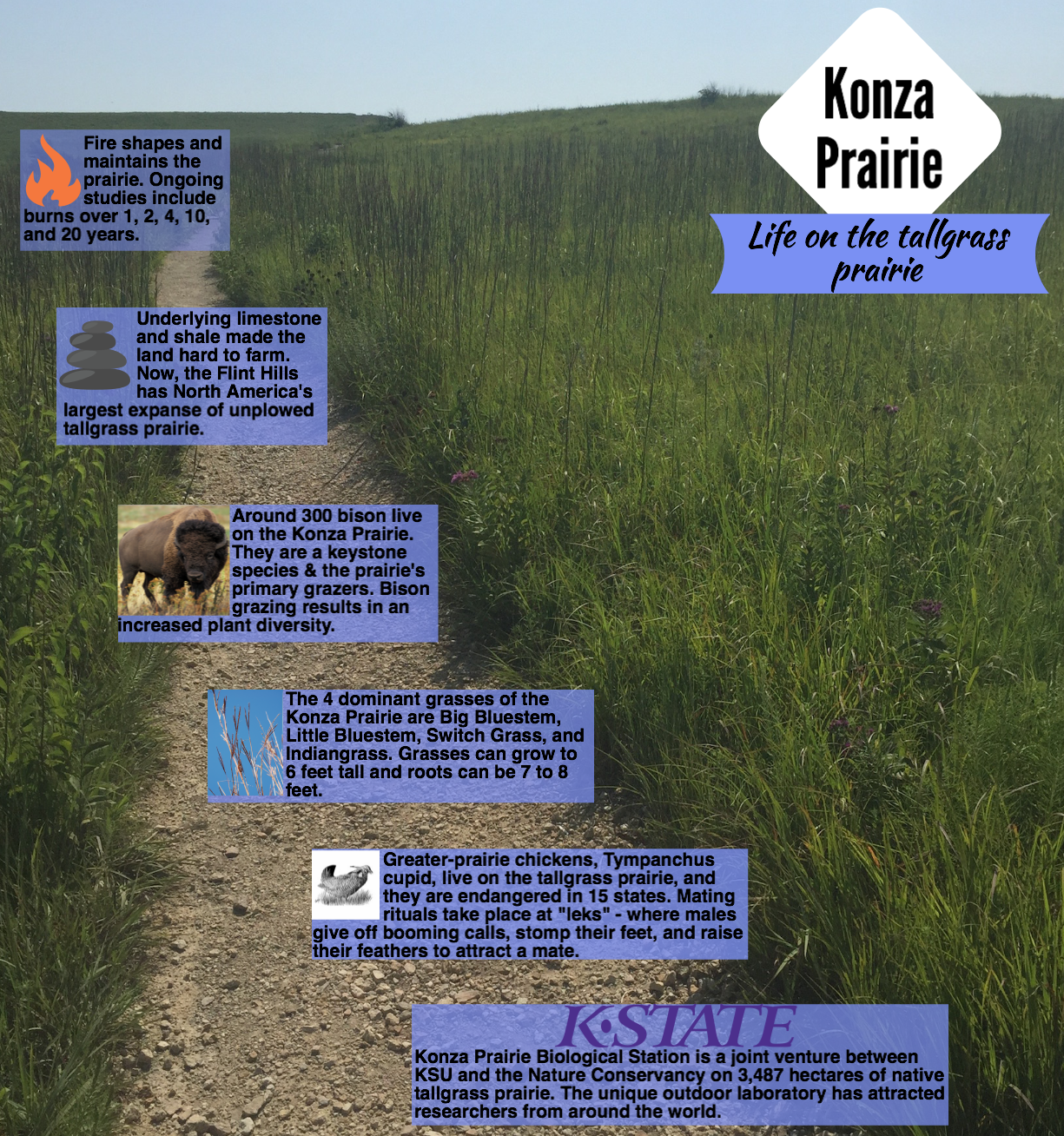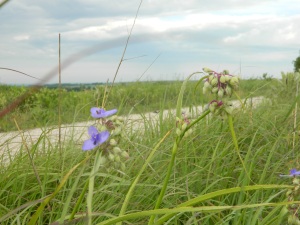While the state park infrastructure of Lehigh Portland State Park isn’t built up yet, the beautiful Lehigh Portland trails south of Iola are open for business, and they are definitely well worth a visit (or two or three) whether you’re on foot or riding a bike!
It’s hard to pinpoint just what it is that makes the place so special. It could be the views out from the bluffs over the spring-fed quarry lake, which is super clear. It could be the well-maintained trails that run through stretches of tall prairie grasses or through hardwood forest and offer something to everyone, whether you want to spend a full day exploring or just take out a picnic lunch. It could be the passion that those who’ve helped build the park into what it is today and the vision that they have for its future. All I know is that I can’t wait to go back and visit again.
A quick history of how we got here. On April 19, 2023, Governor Laura Kelly established Kansas’ 28th state park — the Lehigh Portland State Park in Iola.
It’s on the site of what was once the largest cement plant in the United States – the Iola Portland Cement Company, according to Lehigh Trails. That company was bought by the Lehigh Portland Cement Company in 1917, which operated there until 1970. From there, Iola Industries Inc. purchased the land and buildings. In 2016, the trail system was officially opened, and over 50 years since the original purchase, Iola Industries donated 360 acres of land to state of Kansas to make it into a state park.
Kansas basically got a turnkey park when it comes to the Lehigh Portland State Park, Lisse Regehr, President and CEO for Thrive Allen County, explained to us. Regehr said that “over a million dollars of infrastructure and volunteer hours have gone into creating the trail system.” And while there is plenty of work for the state to do in terms of building up infrastructure, the trail system is pretty much finished, thanks in large part to hundreds of volunteer hours.
And those trails are outstanding! They are primarily on the eastern and western side of the spring-fed quarry lake. There’s a combination of a few miles of wide gravel trail and many more miles of singletrack, ideal for mountain biking. There’s also a range of difficulties. If you’re starting out on a mountain bike or have kids, the Foundations Trail is perfect. If you want something with a challenge, try Cave Trail North, Mountain Goats, and Goat Creek. The 11-feet-wide gravel Backbone trail connects all the trails, and there’s a connector gravel trail to the nearby Southwind Rail Trail that runs from Iola to Humboldt. Here’s a full trail map.
Some of the standout options include the South Loop, which winds through the trees, through the prairie, and along the quarry with some stunning views of the lake. And Cave Trail South leads you right by John Brown’s Cave. While Regehr said there’s not necessarily specific evidence that THE John Brown ever stayed there, there’s no proof that he didn’t. (More on John Brown’s Cave in a later post). And one of the sweetest, and most unexpected trails, is the John Robert Cross Country Ski Memorial along the Backbone Trail. It has to do with a first date and a fun-loving grant writer – more on that soon.
The trails are free to access, and there’s not currently (as of this writing) a fee to park your car at the trailheads, but as the state park designation moves forward, there is a parking fee at state parks. It will be free to walk into or ride your bike into the park, and the park is easily accessible from the town of Iola.
Regehr explained what some of the upcoming plans and goals are for the state park, and they are impressive. There will be an expansion of the Backbone Trail so that it runs all the way around the lake. There will be an amphitheater, a large swimming beach, kayak and paddleboard dock, fishing docks, a boardwalk, restrooms, a multi-story visitors center with views out over the lake. And if you want to stay at the park, there will eventually be RV and primitive campsites and perhaps someday, floating cabins. I can’t imagine a more idyllic setting than being able to watch the sunrise and sunset from on the water itself.
For now, if you’re looking to explore Iola, there are some amazing lofts you can stay in downtown, and there’s Base Camp in Humboldt for camping – more on both of those as well!


